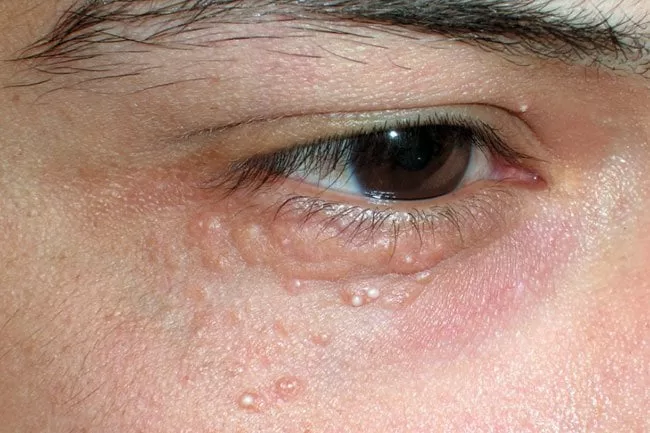Milia, often referred to as milk spots, are tiny white or yellowish cysts that appear on the skin due to trapped keratin beneath the surface. While they are harmless, many people seek treatment for cosmetic reasons. However, for individuals with sensitive skin, choosing the right approach to milia removal is crucial to avoid irritation or adverse reactions. In this article, we will explore whether milia treatments are suitable for sensitive skin and discuss the most effective methods.
Effective Milia Treatments for Sensitive Skin
Milia Treatments in Dubai offer various solutions for individuals looking to address this common skin concern. However, people with sensitive skin must choose treatments that are gentle yet effective to prevent irritation, redness, or worsening of the condition. The right treatment method depends on factors such as skin type, severity of milia, and individual tolerance to different procedures.
Understanding Milia and Its Causes
Milia can develop due to a variety of factors, including dead skin buildup, excessive sun exposure, improper skincare routines, and even genetic predisposition. Unlike acne, milia are not caused by clogged pores or bacteria, making them resistant to traditional acne treatments. Sensitive skin, characterized by heightened reactivity to skincare products and environmental factors, requires a tailored approach when dealing with milia.
Safe and Gentle Milia Removal Methods
For individuals with sensitive skin, certain treatment options are considered safer and more suitable than others. Below are some of the most recommended approaches:
Topical Exfoliation with Mild Ingredients
Using gentle exfoliants like lactic acid or mandelic acid can help remove dead skin cells and prevent keratin buildup. These ingredients are less likely to cause irritation compared to stronger exfoliants like glycolic acid. Over-the-counter creams containing retinol may also help in promoting cell turnover and preventing new milia from forming.
Manual Extraction by a Professional
For persistent milia, professional extraction using a sterilized needle can be an effective solution. This procedure should only be performed by a dermatologist or skincare specialist to minimize the risk of infection or scarring. Individuals with sensitive skin must ensure that the professional uses techniques suited to their skin type to avoid unnecessary inflammation.
Cryotherapy (Freezing the Milia)
Cryotherapy involves applying liquid nitrogen to freeze and remove milia. While it is generally effective, people with sensitive skin should exercise caution as it may cause temporary redness or irritation. A dermatologist can determine whether this method is suitable for your skin type and take necessary precautions to minimize side effects.
Laser Treatment for Stubborn Milia
For those with recurring milia, laser treatments using gentle, non-invasive techniques can be beneficial. Laser therapy works by targeting the cysts without causing excessive damage to surrounding skin. Sensitive skin individuals should opt for low-intensity laser treatments to minimize discomfort.
Gentle Chemical Peels
Mild chemical peels containing alpha-hydroxy acids (AHAs) or beta-hydroxy acids (BHAs) can help in exfoliating the skin and preventing milia. However, sensitive skin types should avoid strong peels and consult a dermatologist for a customized peeling treatment that suits their skin's tolerance level.
Preventing Milia in Sensitive Skin
While treatment is essential, preventing milia from developing in the first place is just as important, especially for individuals with sensitive skin. Here are some tips to keep milia at bay:
- Use a Gentle Cleanser: Harsh cleansers can strip the skin of natural oils, leading to irritation and excessive dryness. Opt for fragrance-free, hypoallergenic cleansers.
- Hydrate Without Clogging Pores: Choose lightweight, non-comedogenic moisturizers to keep the skin hydrated without increasing the risk of milia formation.
- Incorporate Sunscreen Daily: Sun damage can worsen milia, so using a broad-spectrum SPF 30+ sunscreen is essential.
- Avoid Heavy Skincare Products: Thick creams and occlusive ingredients can trap keratin under the skin, leading to more milia formation.
- Exfoliate Regularly but Gently: Incorporate mild exfoliants into your skincare routine to promote cell turnover without causing irritation.
Conclusion
Milia treatment can be effective for individuals with sensitive skin, but it requires a cautious and tailored approach. Opting for gentle exfoliation, professional extraction, laser treatments, and mild chemical peels can help in managing this condition without triggering skin irritation. Additionally, preventive skincare practices play a crucial role in reducing the recurrence of milia. If you have sensitive skin and are considering treatment, consulting a dermatologist can help in choosing the best method that aligns with your skin’s needs.






Comments